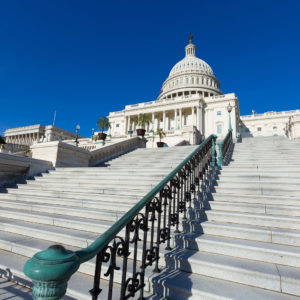Lawmakers in Washington are moving at a faster pace than they have been for several years. And while it is encouraging to see some progress on tax and health care reform, it is also problematic that there is movement to bring back earmarks.
Congress banned earmarks in 2011 after Republicans gained control of the House. And now, six years later, with full control of the legislative and executive branches, the threat of earmarks shouldn’t be a problem. Not so fast.
The fiscal year 2017 Defense Appropriations Bill that passed the House last week contained 406 earmarks worth $14.5 billion. None of the earmarks listed were requested by the Pentagon, and instead inserted by one or more members of Congress.
Even though they were officially banned in 2011, Congress has continued to rely on earmarking for some of the most expensive and wasteful pet projects in the budget. And, there is no better breeding ground for earmarks than the massive Defense Appropriations bills.
The 406 earmarks is an 11 percent increase in the number of projects and just a 1 percent decrease in total dollars from fiscal year 2016. This is inexcusable, but it is exactly the kind of thing that Congress has been doing with the Defense Appropriations bills for years.
Earmarking is an irresponsible way to spend money. In addition to the chaos it causes during the appropriations process, earmarks are funding wasteful programs and projects. For example, one of the earmarks in the recent Pentagon spending bill is $475 million for the Littoral Combat Ship (LCS). A recent report from the Government Accountability Office looked at the LCS and pressed Congress on the future of the program noting, “A more basic oversight question today is whether a ship that costs twice as much yet delivers less capability than planned warrants an additional investment of nearly $14 billion.”
The F-35, another earmark in the fiscal year 2017 bill, has become a poster child for a program that is over budget and underperforming. According to one report, “The F-35 Joint Strike Fighter has been hailed as the ‘most expensive weapon in history,’ costing $400 billion. However, according to Aviation Week, the plane’s laser targeting system has one slight flaw — it can only target stationary or slow-moving objects.”
Despite the unpopularity of earmarks by taxpayers and taxpayer advocates, there is still movement in Congress to return to the days of full on earmarking that gave us such duds like the “Bridge to Nowhere.”
Shockingly, the plan to resurrect earmarks is coming from Republicans. In particular, Reps. John Culberson of Texas, Mike Rogers of Alabama and Tom Rooney of Florida introduced a proposal to bring back earmarks and called for a vote on their proposal. House Speaker Paul Ryan of Wisconsin thankfully delayed the vote. This attempt is troubling because it shows that some in Washington still just don’t understand that people are frustrated with Congress and Washington.
The threat of earmarks returning may be a real concern this year with a potential $1 trillion infrastructure bill. That amount of spending has many government watchdog groups worried that wasteful spending projects will be put into the bill. The infrastructure bill could be the perfect storm for appropriators and earmark champions.
Earmarking is not an insignificant problem. Members of Congress and a lobbyist went to jail because of earmarks.
The current Defense appropriations bill should be a stark reminder that earmarks are far from being eliminated. The $20 trillion debt is a reminder that Congress needs to get serious about spending reform. If Congress can’t forgo its earmarks, it is unlikely that it will have the courage to tackle tougher spending issues such as entitlement reform.
Taxpayers are fed up with the wastefulness and inaction in Washington. They want real and meaningful reform on taxes, spending and regulation. The best way to achieve that reform (particularly on spending) is for Congress to return to regular order, not a return to earmarking.

